3D Tracking for Gait
Characterization and Recognition
Most current gait analysis algorithms
rely on appearance-based methods that do not explicitly
take into account the 3--D nature of the motion. In
this work, we propose an approach that relies on robust
3--D tracking and has the potential to overcome the
limitations of appearance-based approaches, such as
their sensitivity to occlusions and changes in the direction
of motion.
In previous
work we have shown that using motion
models based on Principal Component Analysis
(PCA) lets us formulate the
tracking problem as one of minimizing differentiable
objective functions whose state variables are the PCA
weights. Furthermore, the differential structure of
these objective functions is rich enough to take advantage
of standard deterministic
optimization methods, whose computational requirements
are much smaller than those of probabilistic
ones and can nevertheless yield very good results even
in difficult situations.
These methods
can also be used to recognize
people and characterize their
motion. More specifically, we first used an optical
motion catpure system and a treadmill to build a database
of walking motions for a few subjects. We then captured
both the motion of these subjects and of other people
by running our PCA-based
tracker on low-resolution stereo data. The resulting
weights can then be used to recognize the people in
the database and to characterize the motion of those
who are not.
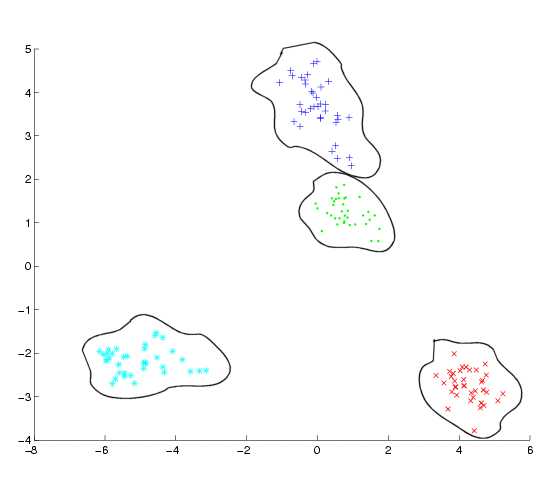
Figure 1: Clustering
behavior of teh first PCA components
Because our tracking algorithm is robust
to occlusions and insensitive to changes in direction
of motion, our proposed approach has the potential to
overcome some of the main limitations of current gait
analysis methods. This is important if biometrics,
defined as a measure taken from a living person and
used as a method of identity verification or recognition,
are to move out of the laboratory and into the real
world.
1. Characterization
Only a few coefficients are used for
tracking purposes since they encounter a big percentage
of the database.
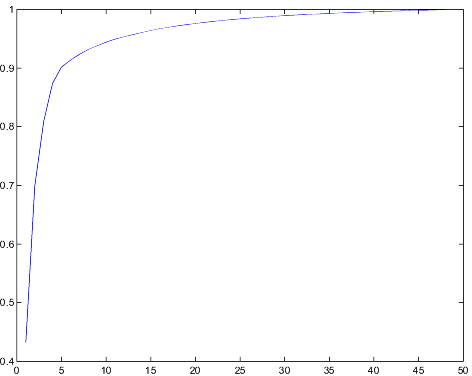
Figure 2: Percentage
of the database that can be generated as a function
of the number of eigenvectors.
Sequences captured using a low resolution
and low framerate are used to show the performances
of the system. The sequences have been tracked and the
coefficients are recovered. This coefficients serves
as motion characterizations since they encode the difference
from the average motion.
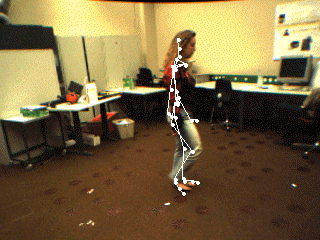 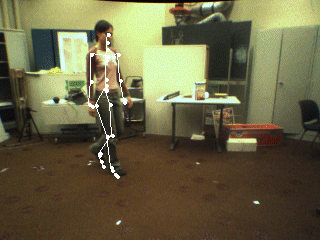
Figure 3: Tracking results
for subjects whose motion has been recorded in the database.
Moreover the fourth coefficient evolves
almost monotonically with the speed, which will allow
us to evaluate the speed of the walking subject. This
can be recovered in a cualitative way, as shown in Figure
?? for the 3 tracked examples.

Figure 4: Fourth PCA
coefficient as a function of the speed.
2. Recognition
The first coefficients tend to cluster,
as shown in Figure1, since our approch handles the motion
sequences as a whole, as opposed to a set of individual
poses, thus making the clusters compact enough for direct
classification. We use a simple k-means algorithm with
the Mahalanobis distance as the similarity distance
for recognition.
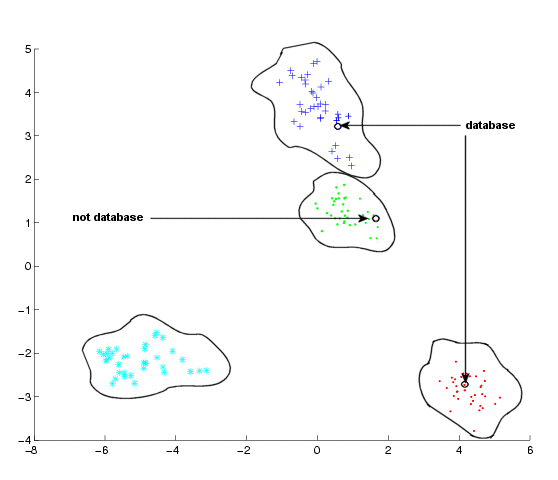
Figure 5: Recognition
from stereo data.
The sequences from people whose motion
has been recorded in the database fall into the cluster
fromed by their recorded motions. Experimental results
show that the first coefficients encodes general characteristics
as weight, height, gender or age, and the following
ones can be use to dishtinguish among people who share
this characteristics.
PUBLICATIONS
R. Urtasun, P. Fua
3D
Tracking for Gait Characterization and Recognition
In Proceeding of the 6th International Conference on
Automatic Face and Gesture Recognition, Seoul, Korea,
May 2004. IEEE Computer Society.
|